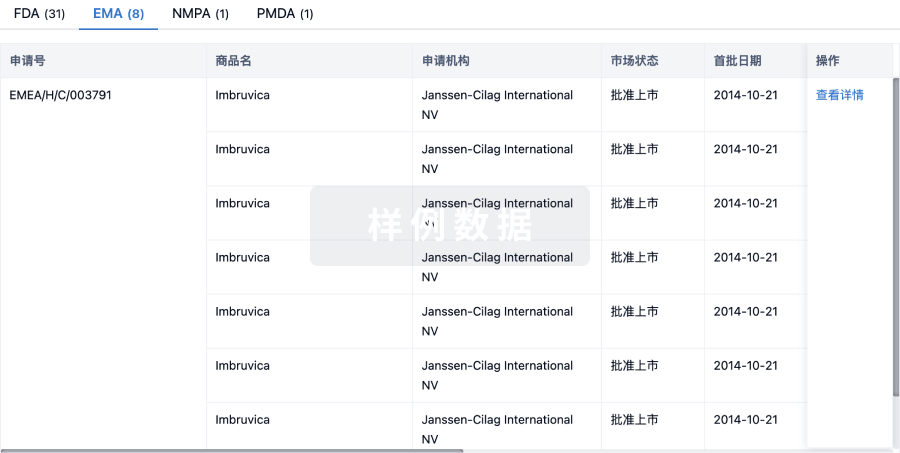预约演示
更新于:2025-10-25
Carbonic anhydrase inhibitors(University of Wollongong)
更新于:2025-10-25
概要
基本信息
非在研机构- |
权益机构- |
最高研发阶段临床前 |
首次获批日期- |
最高研发阶段(中国)- |
特殊审评- |
关联
100 项与 Carbonic anhydrase inhibitors(University of Wollongong) 相关的临床结果
登录后查看更多信息
100 项与 Carbonic anhydrase inhibitors(University of Wollongong) 相关的转化医学
登录后查看更多信息
100 项与 Carbonic anhydrase inhibitors(University of Wollongong) 相关的专利(医药)
登录后查看更多信息
1,147
项与 Carbonic anhydrase inhibitors(University of Wollongong) 相关的文献(医药)2025-11-01·JOURNAL OF PHOTOCHEMISTRY AND PHOTOBIOLOGY B-BIOLOGY
Fenton reaction-enhanced mild photothermal therapy for cancer suppression with a multifunctional platform
Article
作者: Li, Na ; Tang, Bo ; Wang, Kaiye ; Liu, Xiaohan ; Jia, Yuting ; Pan, Limeng ; Pan, Wei ; Shi, Mingwan
Mild photothermal therapy effectively reduces hyperthermia-related tissue injuries; however, its low therapeutic efficiency presents a significant limitation. Herein, we developed an organic multifunctional photothermal platform with enhanced Fenton catalytic activity to increase tumor sensitivity to mild photothermal therapy. This platform incorporated a self-augmented Fenton molecule integrating carbonic anhydrase inhibitor and ferrocene, which was co-encapsulated with the photothermal agent IR 825 via an amphiphilic polymer. Under near-infrared laser irradiation, IR 825 generated heat for mild photothermal therapy, while the inhibitor blocked carbonic anhydrase IX, resulting in intracellular acidosis due to the H+ accumulation. The combination of acidosis and controlled heating facilitated the Fenton reaction, increasing oxidative damage to cells and heightening their sensitivity to heat. Consequently, this synergistic effect enhanced the therapeutic efficacy of mild photothermal therapy against tumor cells, as demonstrated by significant tumor inhibition in our experimental results. This study represents a promising approach towards advancing mild photothermal therapy for cancer treatment.
2025-11-01·BIOORGANIC & MEDICINAL CHEMISTRY
Synthesis of 6-ethoxyphenyl 4-fluorobenzenesulfonate-tagged thiosemicarbazones as carbonic anhydrase inhibitors: In-vitro and in silico approach
Article
作者: Şenol, Halil ; Alharthy, Rima D ; Taslimi, Parham ; Rasool, Asif ; Farooq, Abdul Asim ; Schenone, Silvia ; Munir, Iqra ; Sadeghian, Nastaran ; Shafiq, Zahid ; Ghaffar, Uzma ; Aftab, Hina
In this study, a series of 6-ethoxyphenyl-4-fluorobenzenesulphonate-based thiosemicarbazones (5a-w) were synthesized via a two-step process and structurally characterized by 1H NMR and 13C NMR spectroscopy. Their inhibitory activities against human carbonic anhydrase isoforms I and II (hCA I and hCA II) were evaluated, revealing potent inhibition at low nanomolar concentrations with IC50 values ranging from 56.36 to 230.17 nM for hCA I and 30.66 to 175.45 nM for hCA II. Compounds 5a, 5g, and 5n exhibited the highest enzyme inhibition, with 5a identified as the most potent in vitro inhibitor for both isoforms. Molecular docking studies and MM-GBSA binding free energy calculations demonstrated that compound 5n displayed the strongest binding affinity toward hCA I, stabilized by key interactions including π-π stacking, hydrogen bonds, and coordination to the catalytic zinc ion. Molecular dynamics simulations over 100 ns confirmed the stability and dynamic adaptability of the 5n-hCA I and 5g-hCA II complexes, preserving critical interactions essential for binding. Validation of the docking protocol yielded RMSD values below 2.0 Å, supporting the reliability of the computational approach. Overall, these findings highlight compounds 5n and 5g as promising lead molecules for selective inhibition of hCA I and hCA II, with potential applications in the treatment of carbonic anhydrase-related disorders.
2025-09-24·Retinal cases & brief reports
Peripapillary retinoschisis associated with open angle glaucoma responding to dorzolamide
Article
作者: Golebka, Jedrzej ; Flynn, Erin ; Chang, Stanley ; Moussa, Omar
Purpose::
Presenting a case of peripapillary retinoschisis in a patient with glaucomatous optic neuropathy that resolved after changing therapy from topical bimatoprost to timolol/dorzolamide.
Methods::
A 70-year-old female who presented for a second opinion for peripapillary retinoschisis in the left eye.
Results::
The patient’s visual acuity was 20/25 and 20/30 in the right and left eyes, respectively. Dilated fundoscopy revealed posterior vitreous detachment (PVD) of the left eye, temporal cupping with a superotemporal notch of the left optic nerve, and bilateral macular drusen and pigmentary changes of the retinal pigment epithelium (RPE). Optical coherence tomography of the macula of the left eye showed a PVD, drusen, and peripapillary retinoschisis extending to and involving the fovea. Topical prostaglandin analogue eye drop was discontinued and replaced by dorzolamide/timolol. The peripapillary retinoschisis resolved after medication change over the following 48 months and has not recurred.
Conclusion::
We present a case of peripapillary retinoschisis in a phakic patient that developed during treatment with a topical prostaglandin analogue. The schisis resolved after switching the prostaglandin analogue to a topical carbonic anhydrase inhibitor. We suggest that the prostaglandin may have had a role in initiating peripapillary retinoschisis associated with glaucomatous optic neuropathy and that carbonic anhydrase inhibitors are a potential treatment for this condition.
100 项与 Carbonic anhydrase inhibitors(University of Wollongong) 相关的药物交易
登录后查看更多信息
研发状态
10 条进展最快的记录, 后查看更多信息
登录
| 适应症 | 最高研发状态 | 国家/地区 | 公司 | 日期 |
|---|---|---|---|---|
| 青光眼 | 临床前 | 澳大利亚 | 2020-03-26 |
登录后查看更多信息
临床结果
临床结果
适应症
分期
评价
查看全部结果
| 研究 | 分期 | 人群特征 | 评价人数 | 分组 | 结果 | 评价 | 发布日期 |
|---|
No Data | |||||||
登录后查看更多信息
转化医学
使用我们的转化医学数据加速您的研究。
登录
或

药物交易
使用我们的药物交易数据加速您的研究。
登录
或

核心专利
使用我们的核心专利数据促进您的研究。
登录
或

临床分析
紧跟全球注册中心的最新临床试验。
登录
或

批准
利用最新的监管批准信息加速您的研究。
登录
或

特殊审评
只需点击几下即可了解关键药物信息。
登录
或

生物医药百科问答
全新生物医药AI Agent 覆盖科研全链路,让突破性发现快人一步
立即开始免费试用!
智慧芽新药情报库是智慧芽专为生命科学人士构建的基于AI的创新药情报平台,助您全方位提升您的研发与决策效率。
立即开始数据试用!
智慧芽新药库数据也通过智慧芽数据服务平台,以API或者数据包形式对外开放,助您更加充分利用智慧芽新药情报信息。
生物序列数据库
生物药研发创新
免费使用
化学结构数据库
小分子化药研发创新
免费使用
